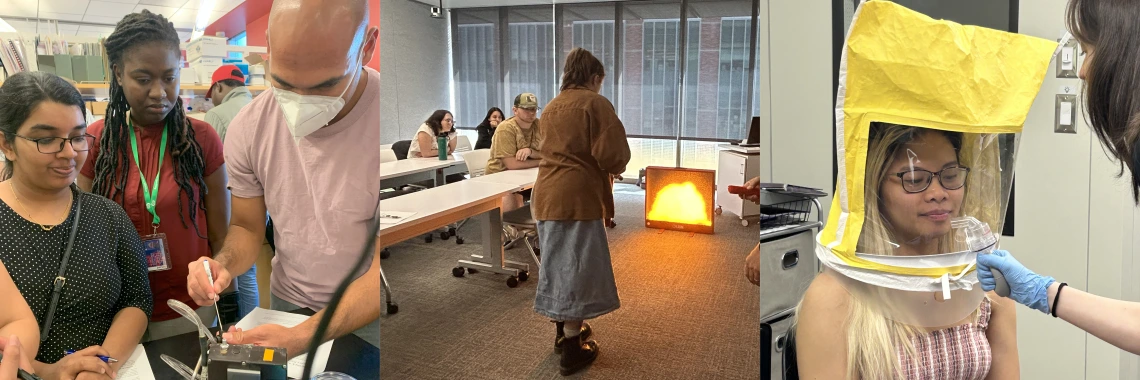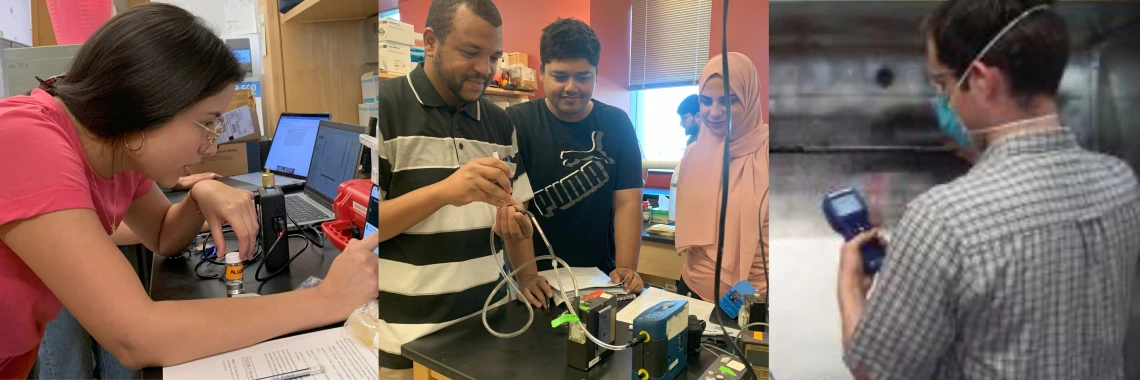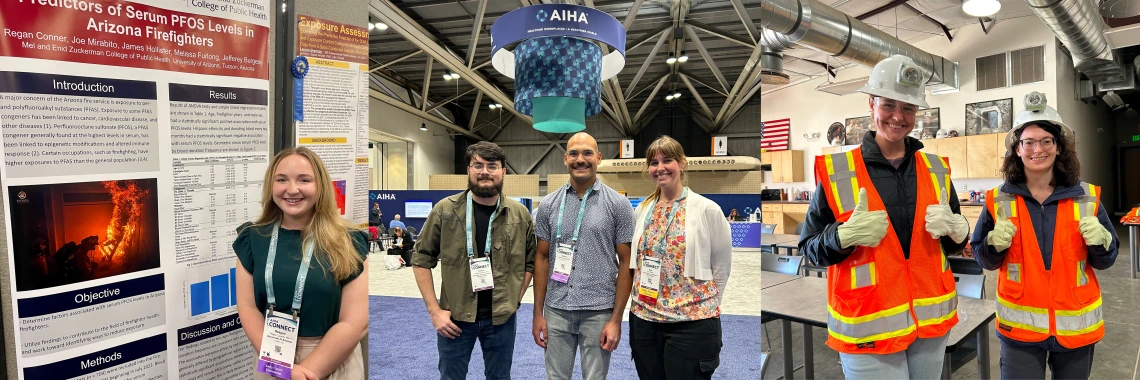MPH in Environmental Occupational Health
Industrial Hygiene Track
Nearly one-third of human life (~90,000 hours) is spent in the work environment. Industrial Hygiene professional practice is vital to maintaining human health!

Our Goal:
To reduce or eliminate workplace injuries and illnesses, and provide for a more healthful workplace environment for all.
What is Industrial Hygiene?
Industrial Hygiene (IH) is the art and science devoted to the anticipation, recognition, evaluation, control, and confirmation of protection from workplace hazards. “Industrial Hygiene” is synonymous with “Occupational Health”, “Environmental Safety and Health”, and “Occupational Environmental Health and Safety”.
What we prevent:
Industrial Hygiene practitioners prevent work-related injuries, illnesses, and significant discomfort that negatively impacts productivity and worker well-being.
Hazards and stressors we manage:
- Chemical (e.g., dust, vapor, fume, particulates)
- Physical (e.g., noise, heat, safety)
- Biological (e.g., infectious materials)
- Radiological (e.g., ionizing and non-ionizing radiation)
- Ergonomic stressors (e.g., repetitive motion, worker-systems design, stress)
MPH Environmental & Occupational Health (EOH) – Industrial Hygiene degree hallmarks:

- CEPH-accredited interdisciplinary MPH degree in Public Health with emphasis in Industrial Hygiene.
- Exposure-based program emphasizing the anticipation, recognition, evaluation, control, and confirmation of protection from chemical, physical, biological, radiological and ergonomic hazards in the workplace and community.
- Interprofessional Public Health experiences and Internship program in industrial hygiene-related professions.
- Industrial hygiene track courses that highlight the fundamentals of Industrial Hygiene professional practice and certification preparation, Board for Global EHS Credentialing (BGC) - Certified Industrial Hygienist (CIH) and the Board of Certified Safety Professionals (BCSP).
- The MPH EOH-industrial hygiene track is a BCSP Qualified Academic Program (QAP). Graduates can apply for the Graduate Safety Practitioner® designation.

The MPH Environmental and Occupational Health - Industrial Hygiene degree will enable me to:
- Anticipate workplace stressors across industries
- Recognize workplace stressors of tasks and processes
- Evaluate workplace stressors defining “how much” and making correct exposure judgements
- Understand the toxicology and physiological effects of workplace stressors
- Develop control plans to protect workers and communities
- Design and test occupational engineering controls
- Specify appropriate personal protective equipment
- Use statistics and epidemiology to enhance workplace evaluation
- Correctly apply legal standards to workplace situations
- Understand ethics for practitioners in occupational health and safety fields
- Appreciate and recognize the need for lifelong learning in the field of Industrial Hygiene
Employment Outlook
Industrial hygiene continues to present a positive job outlook with the U.S. Bureau of Labor Statistics predicting 14% (must faster than average) growth between 2023-2033 for Occupational Health and Safety Specialists and Technicians and reporting a 2024 median pay of $58,440 per year for technicians and $83,910 per year for specialists.
Industrial Hygiene professional organizations perform salary and compensation surveys with AIHA 2023 Salary and Compensation Study reporting an average base salary of $122,925 across all regions of the United States and all levels of experience (including both certified and non-certified professionals).
Graduate Testimonials
Hear what some of our most recent graduates have to say about the UA IH program. Recent Graduates

Pathways to the MPH Environmental & Occupational Health - Industrial Hygiene degree (MPH EOH-IH):
Traditional
Students holding a BS degree or those in their senior year of an undergraduate degree may apply to the Mel and Enid Zuckerman College of Public Health for direct or selective admission to the MPH program for the following Fall semester.
Accelerated 3+2 MPH
BS Public Health students interested in pursuing an MPH and completing both a BS and MPH in a shortened timeframe may apply for our Accelerated Master Program (AMP). If accepted to participate in the accelerated 3+2 program, students complete either an MPH EOH or MPH EOH-IH in 5 years. Please contact the MEZCOPH undergraduate advisor for requirements.
NIOSH Training Project Grant Funding:
Those interested in industrial hygiene and enrolled in the MPH-EOH-IH track may be eligible to receive federal funds through the NIOSH extramural training program in Industrial Hygiene. For more information and frequently asked questions about the NIOSH training program download the pdf.
Student AIHA Arizona Chapter:
All students are invited to be a part of the AIHA local Chapter. Students who are interested in environmental, occupational, and community health regardless of degree program or status (i.e., undergraduate, graduate, postgraduate) can participate! We offer volunteer opportunities, tours of industry, free learning opportunities, and a way to connect socially and professionally with other students.




